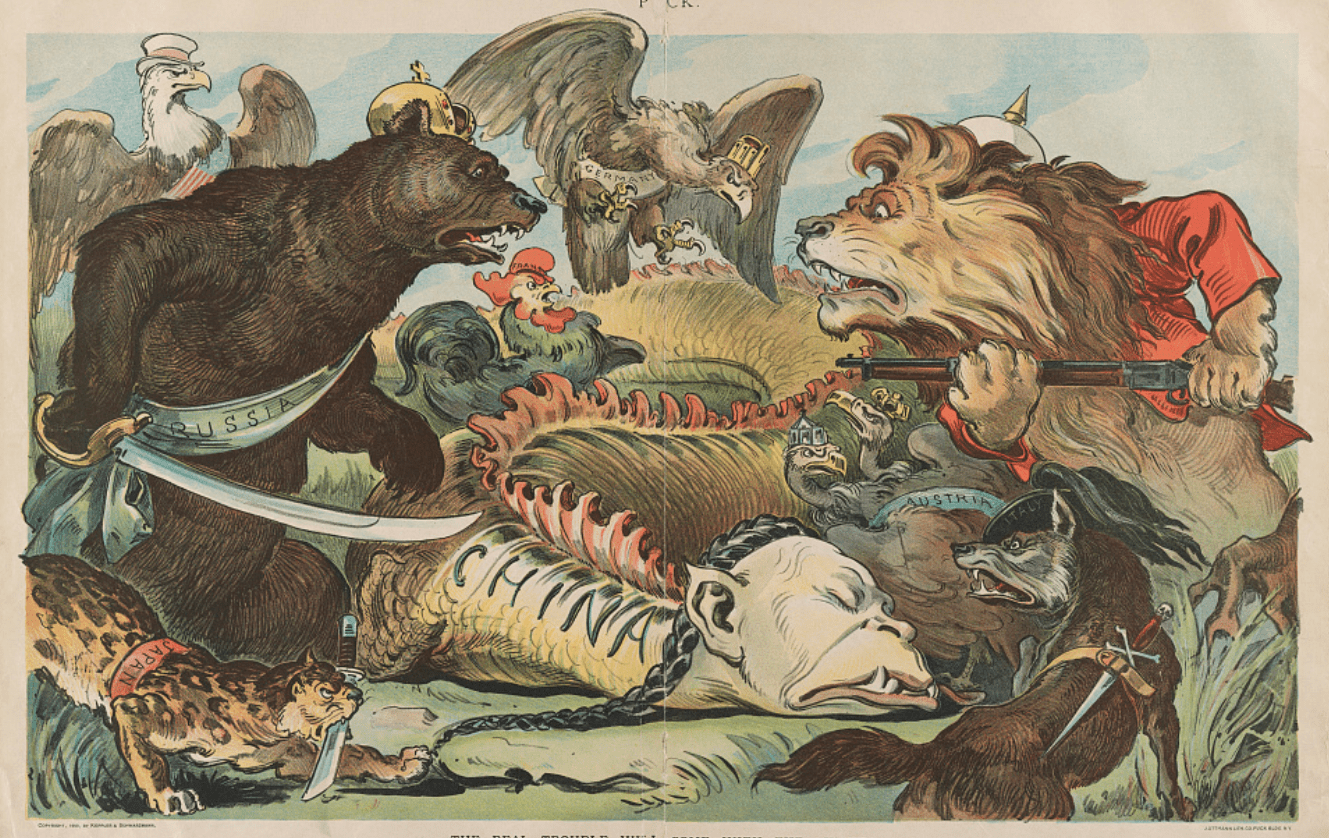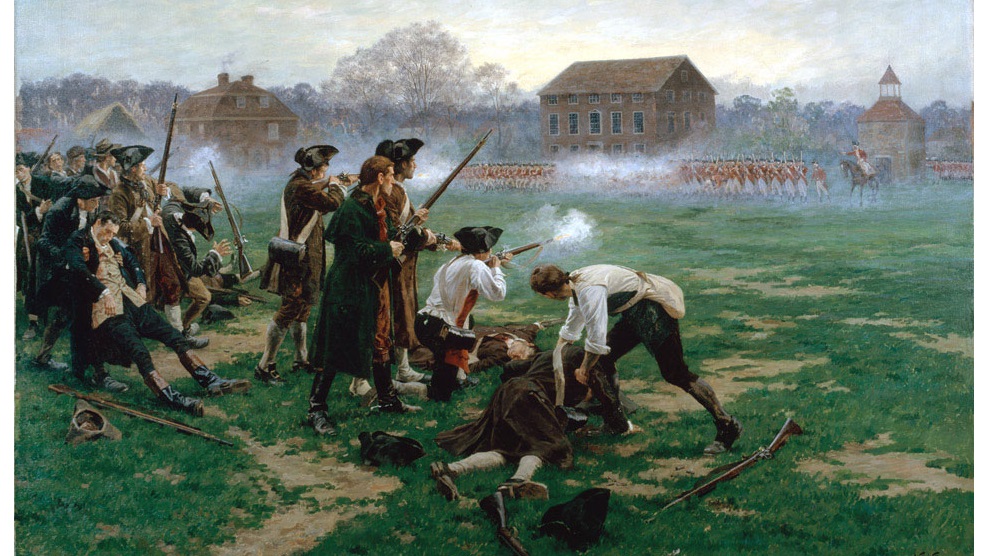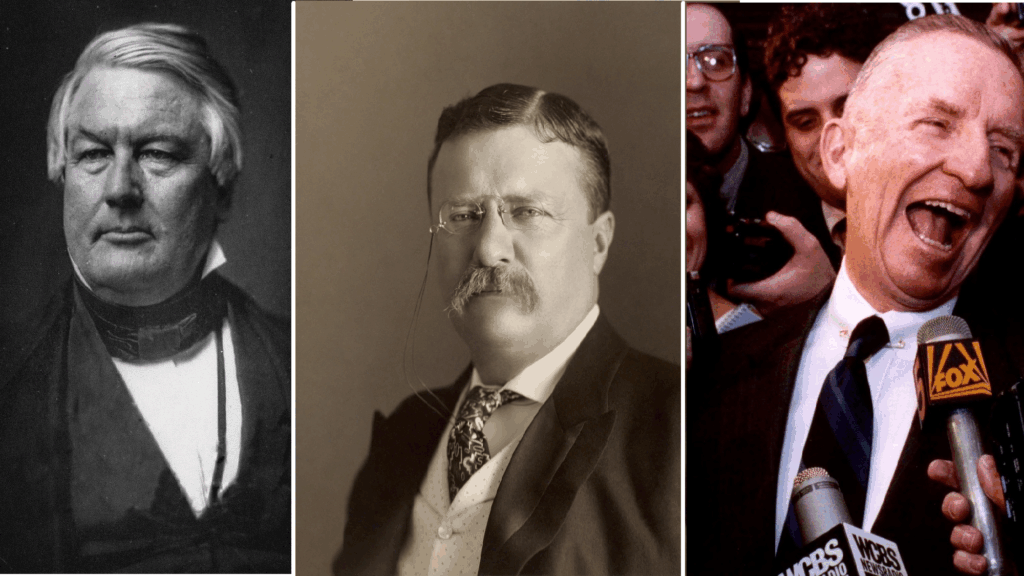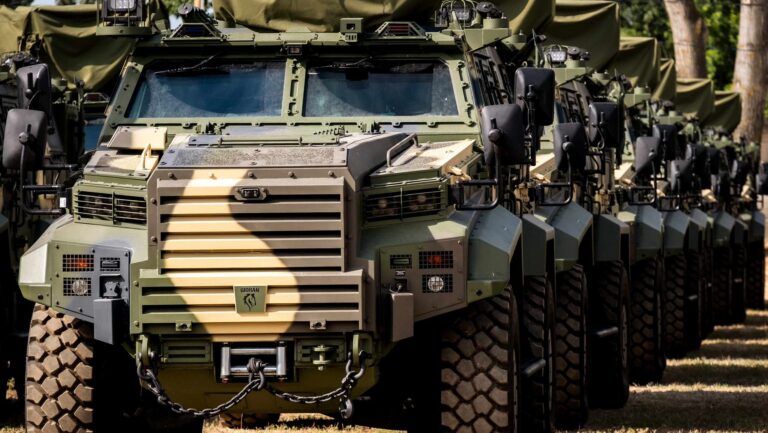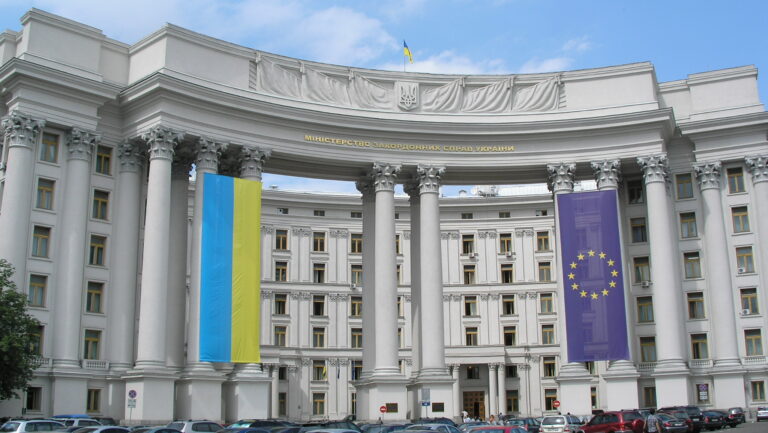Introduction
The states of Central Europe have long heard the United States’ narrative of spheres of influence being a ‘thing of the past’, but have experienced and perceive a different reality. Now, amid the broader geopolitical paradigm shift that a rising China and a re-emerging Russia presents, Central Europe worriedly watches the increasingly dangerous ongoing brinksmanship in Ukraine. They are also well aware that analytical mistakes by an allied great power can have detrimental effects on the alliance as a whole, and smaller members of the alliance as well. For NATO member states, all these factors cause concern.
This essay argues that in contrast to the narrative of the United States that spheres of influences are ‘archaic and relics of history’, spheres of influence were present and were always perceived to be present in Central Europe by the region’s states. It also argues that spheres of influence are not only unlikely to disappear as the world shifts towards fractured multipolarity, but are likely to gain in explanatory power and practical prevalence. This difference in perception complicates United States–Central European relations in a period of increasing instability.
The essay first presents a theoretical and historical introduction to spheres of influence. It then proceeds to show that the American claim of ‘leaving behind spheres of influence’ was in fact a narrative superimposition on an essentially global US-led single sphere of influence, and was contingent on the preponderance of global power resting with
Washington during its unipolar moment. The return to multipolarity challenges the influence of this superimposition. The essay shows that spheres of influence were always perceived to be present in Central Europe, and ends by discussing policy implications for the region.
Spheres of Influence
In theory, a sphere of influence is a conceptual term that describes a set of power relations between the states of a given region. Usually this concept is understood to mean that a great power exerts superior authority over smaller states within a geographic region.1 The example that comes most readily to mind is the Cold War and the distinct Soviet and American spheres of influence. From a theoretical standpoint, the concept includes two important dimensions: the intra-sphere-of-influence concept of hierarchical deference and the inter-sphere-of-influence concept of exclusivity.
In layman terms, the great power sets the rules of the game for the region and the weaker powers abide by them
The first dimension, deference, denotes that the great power is clearly the possessor of preponderance of power within the region, and the fount and origin of the broader structures that govern the region. In layman terms, the great power sets the rules of the game for the region and the weaker powers abide by them. The second dimension, exclusivity, means that the great power that controls the sphere of influence does not allow other great powers to meddle in the region’s affairs. Meddling here is a more troublesome term to operationalize, as diplomatic, economic, trade, and political relations have traditionally been present in inter-sphere-of-influence relations. As a shorthand, we can posit that meddling means acting in a way that goes against the stated or understood interests and wishes of the region-controlling great power.2
In practice, spheres of influence are not new. In fact, for much of recorded human history, spheres of influence were a reality of everyday life, if not in a theoretical capacity, at least as a matter of practical experience. Perhaps the oldest example of spheres of influence is the first treaty between Rome and Carthage, signed in 509 BC. This treaty barred Roman ships from entering Carthaginian waters, and forbade Carthage to pillage the allies of Rome. A second notable example is the 1494 Treaty of Tordesillas, when the Pope divided South America into separate Spanish and Portuguese spheres of influence. In 1823, the United States also created its own sphere of influence, in the form of the Monroe Doctrine, a document by which Washington sought to exclude European powers from the Western Hemisphere.
A Superimposition by the United States
From a historical standpoint, up until the end of the Cold War, spheres of influence and their presence in political narratives overlapped. All major powers, doubtless for domestic political reasons, claimed that their system was superior, but understood that there were others who claimed the same, and realized that power was the ultimate arbiter. This changed at the beginning of the United States’ status as the sole superpower across the globe, in the early 1990s. Looking back to that era, we can denote two distinct characteristics that were present, one of the international system and one of the United States’ description of the international system.
The first characteristic of the international system was what we call the ‘unipolar moment’ of the United States.3 The unipolar moment’s precise duration is under debate, but here we mean by it the period between the fall of the Soviet Union and 2014, which is the date of the Russian annexation of Crimea and also coincides with a significant increase in the power of China, and with the establishment of the Asian Infrastructure and Investment Bank. During the unipolar moment, there was no other great power in the system that could challenge the United States for global hegemony. The preponderance of global power rested with the United States.
Looking back on this unipolar moment, we can observe the presence of the first dimension of spheres of influence, as nearly all states paid deference to the United States. The second dimension was observable but—and this is very important—not falsifiable. Or more simply put, we were able to observe that, at a global level, there was no other great power meddling in the affairs of the United States. But given a lack of available evidence, it was not clear whether this was because the ideals of the United States held absolute sway, or simply because no other state had the power to challenge its rule.
From a realist perspective, the United States’ sphere of influence absorbed the other major spheres of influence. Analytically, with a global hegemony, it makes sense not to have multiple competing spheres of influence, but a single essentially worldwide one. But unipolarity was historically unique, without historical precedents to fall back on, and its categorization was problematic: the lack of a falsifiable second dimension left it open to interpretation. A lack of evidence made it impossible to prove whether what we were witnessing was merely a difference in quantity—that is, a sphere of influence of unprecedented size—or something new in history, something different not just in quantity, but also in quality.
This is what gave rise to the second characteristic of the period, the appearance of the ‘end of history’ school of thought.4 Its proponents argued that the new world order led by the United States diverged not only in relative terms from previous hegemonic periods (i.e. because it served the interests of the United States, rather than Great Britain or Rome), but in absolute terms as well. Alternatively stated, the claim, likely influenced by ideas of American exceptionalism, asserted that the US-led world order was different from previous world orders not only in quantity, but also in quality. At times, this thinking was blended with democratic peace theory or institutional liberalism, but differences between the three exist. Suffice to say that during the unipolar moment, the ‘end of history’ thinking became part of the unipole’s political narrative, resulting in the second characteristic, the United States’ description of the world.
The two characteristics are different but are hard to distinguish from each other during the period when the system had only one superpower. And during its unipolar moment, the policy elite of Washington—whether by design, opportunism, belief, or happenstance—superimposed the second characteristic upon the first, broadly conflating the two into a single feature. Rightly or wrongly, it was deemed in the United States’ national interest to emphasize that their hegemony of the international system was not one of a single encompassing sphere of influence, but something new and qualitatively different. And as such, during the unipolar moment, several consecutive US presidents, including Republican President George W. Bush5 and Democrat Barack Obama,6 publically stated that ‘spheres of influence’ had been ‘left behind by history’.
Perceptions in Central Europe
But this superimposition was not uniformly accepted throughout the world, merely left tacitly unchallenged. On the other side of the Atlantic, the global shifts in power were already apparent and the region’s gravitation towards Washington was a foreign policy fiat. But for the states of Central Europe, the two characteristics remained different. For these countries had experienced that the same United States which claimed that ‘spheres of influence are a thing of the past’ behaved quite differently when it did not have the power to act. For Central Europe, the memory of the United States not intervening in the 1956 Hungarian Revolution or the 1968 Czechoslovak Prague Spring stood as stark reminders that political narrative aside, spheres of influence are real and depend on the distribution of power.
For the Central European region, spheres of influence never went away, but were merely suppressed in narrative by the hegemon. For them, America’s unipolar moment simply meant that they were part of the largest sphere of influence ever, the global US-led international order. And thus a mismatch of narrative and perception between the United States and Central Europe arose, between the superimposition made by the United States, and the differentiation made by Central European states.
Notably China and, to a lesser extent, Russia, are clearly intent on re-creating both spheres of influence and the accompanying mentality
While the United States retained its unipolarity, the divergence between the narrative of the United States and perceptions in Central Europe caused only minor rifts between these states. But the unipolar moment is over. Those states that have gained relative power within the system, notably China and, to a lesser extent, Russia, are clearly intent on re-creating both spheres of influence and the accompanying mentality. It is readily apparent that both are aiming to establish their own geographic areas of dominion, and have been doing so consistently. To strengthen their political narrative, both states point to instances of hypocrisy by the United States, and use historical evidence which suggests that spheres of influence are the norm for inter-state relationship, and ought to be accepted today as well.
Implications for US-Central Europe Relations
Secretary Blinken’s remarks just a few months ago suggest that despite the underlying changes in the nature of the international system, the United States still continues to support this superimposed narrative.7 As great power competition increases, it seems the United States has arrived at a turning point. This leads to a number of important foreign policy implications.
The superimposition, whatever advantages it may have conferred during the unipolar moment, now puts Washington at a disadvantage as the global realignment of power challenges US hegemony. As such, it is no surprise that the struggle over what to do with spheres of influence in Washington is acutely present, but uncertainty persists over the optimal future course of action. The policy position of Washington is tricky.
Simply acknowledging that spheres of influences have returned begets two rather problematic questions. First, were they ever truly gone? And second, what made the United States flip-flop in its assessment? Both answers, whatever they may be, will likely be politically costly. But not acknowledging the presence of spheres of influence risks alienating those allies, including some in Central Europe, who never quite understood the benefits of the conflation of the two features and who always perceived that the ‘end of history’ was contingent on US global hegemony.
Doubling down on the superimposition also carries with it risks, as the divergence increases between the characteristics of the international system and the United States’ description of the international system. Further, with changes in global power, Russia’s and China’s description of the international system is beginning to garner more and more influence. For some states in Central Europe, spheres of influences were always present, and the region stands somewhat perplexed by the delay with which the United States is coming to terms with their reality.
Inaction is not ideal either. Those states that are grappling with the impact of their own agency (i.e. what, if any, effect would their own actions have on the broader security dynamic), expect some course of action by the United States. It seems that some course of action is the less costly option.
Timing is the final piece of the puzzle. From Central Europe’s perspective, a closer alignment between the narratives and perceptions of Washington and Central European states is needed to increase regional stability. For this dynamic, the earlier this alignment happens, the better.
NOTES
1 Amitai Etzioni, ‘Spheres of Influence: A Reconceptualization’, The Fletcher Forum of World Affairs, 39/2 (2015), 117–32, www.jstor.org/ stable/45290158.
2 Paul Keal, ‘Contemporary Understanding about Spheres of Influence’, Review of International Studies, 9/3 (1983), 155–72, www.jstor.org/stable/20096980.
3 Charles Krauthammer, ‘The Unipolar Moment’, Foreign Affairs, America and the World 1990, www.foreignaffairs.com/articles/1990-01-01/unipolar- moment.
4 Francis Fukuyama, ‘The End of History?’, The National Interest, 16 (1989), 3–18, www.jstor.org/stable/24027184.
5 ‘Secretary Rice Addresses U.S.–Russia Relations at The German Marshall Fund’, 18 September 2008, U.S. Department of State Archives, https://2001-2009.state. gov/secretary/rm/2008/09/109954.htm.
6 ‘U.S. Rejects “Sphere of Influence” for Russia’, The New York Times (7 February 2009), www.nytimes.com/2009/02/07/world/europe/07iht- 07munich.20001384.html.
7 ‘Remarks by Antony J. Blinken’, Press Briefing Room, Washington, DC, 21 December 2021, www.state.gov/secretary-antony-j-blinken-at- a-press-availability-9/.

